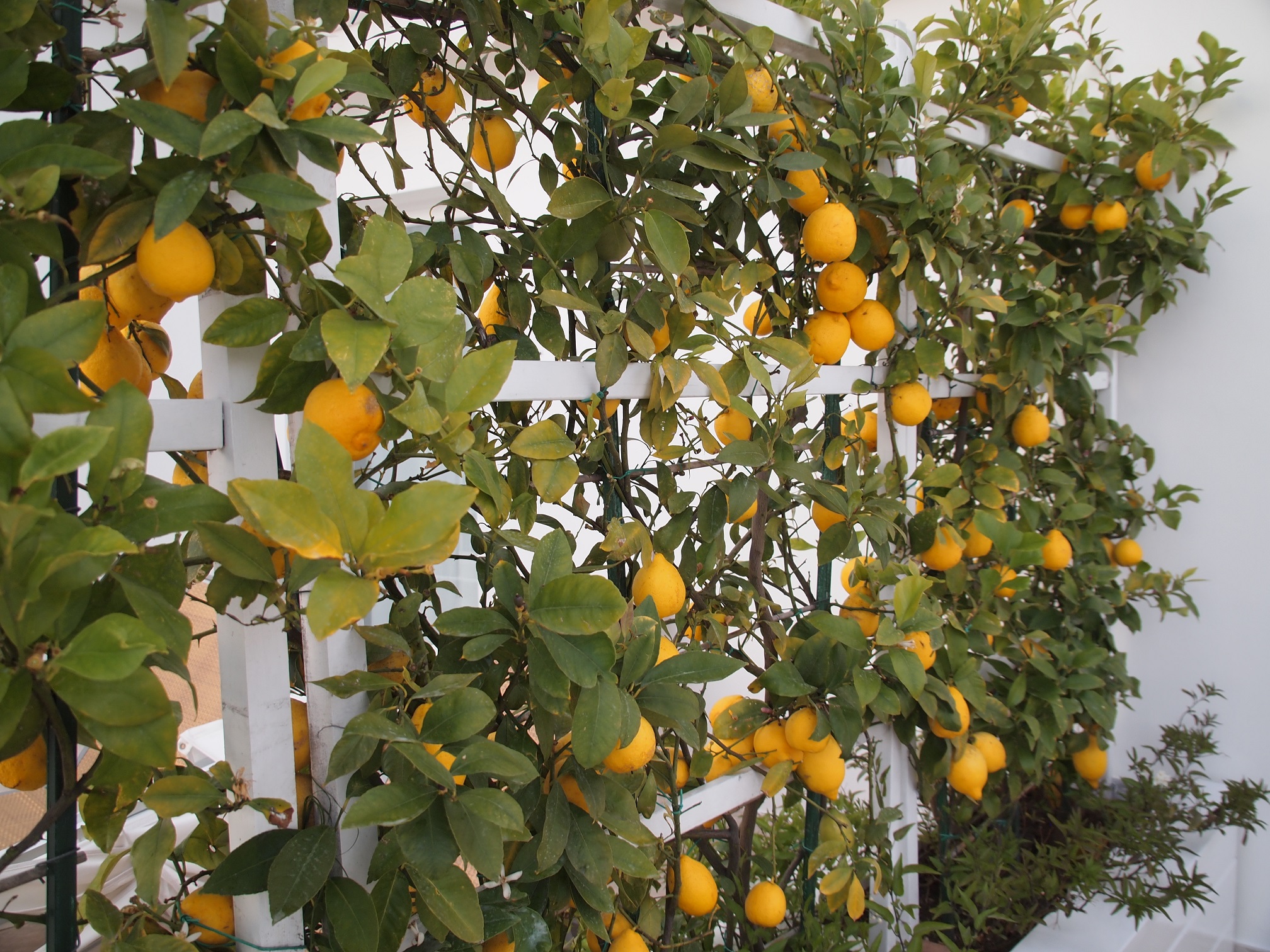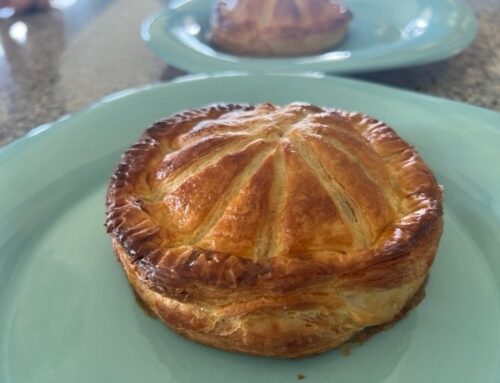Lemons are one of my favourite fruits, I use them almost every day; they are an indispensable part of my cooking. I just love having a large bowl of lemons decoratively gracing my kitchen bench. There is always a refreshing squeeze of lemon in my water glass; lemon juice is also very rich in anti-scorbutic vitamins! They radiate the warm glow of the Mediterranean and bring a ray of sunshine into my kitchen cheering up even the dreariest day. They are bright, colourful, attractive with countless varied uses. Fortunately, they are available in the markets most of the year.
I have planted two small lemon trees in my balcony garden where they are espaliered along the back wall. They look very attractive with their shiny green leaves, and they give me great joy when the white flowers appear and the fruit is formed. The best part is being able to pick one of these precious fruits from time to time. I am thrilled and grateful when my cooking school clients bring me some of their excess lemons.
Lemons are that quintessential fruit that is almost a necessity in everyday cooking. During World War II, there was a serious lemon shortage, or even a total absence at times, which, according to Elizabeth David, (Wine and Food, February/March 1969) was ‘one of the very worst of minor deprivations of those days.’
Lemons can be zested, squeezed, dried, juiced, even used as a stabiliser when whisked into your egg whites for pavlova. You can never have too many ‘on hand’. A lemon is essential to squeeze over your fish, oysters, seafood. Any excess can be preserved in brine, called Preserved lemons and used in those Mediterranean dishes and Moroccan tagines we love to cook so much. They are wonderful in sauces, such as lemon wine and butter sauce and risottos, salads, in mayonnaise and hollandaise, in cakes, baking, with those caprilu, little lemon macarons famous on the Isle of Capri, simply frozen into ice cube containers for future use. And, for dessert, there is the divine lemon meringue tart, lemon crème brûlée and for the aperitif, the sensational limoncello, which I always have made up in the cocktail cabinet.
Lemons thrive in Mediterranean climates. I love seeing them along the southern shores of France, in Nice, Eyzies, the Cote d’Azur, Cassis, Marseilles and along to le Cap d’Agde and as far as Narbonne. Then across into Italy you will find the ubiquitous lemon, grown along the Cinque Terre, to the Amalfi Coast, and over to Capri, beautiful lemon groves abound, where they are trellised, espaliered, and trained over arches forming a citrus canopy. How I would love a big garden so I could tend a citrus grove of my own.
Lemons have been called the ‘queen of fruits’. In France it became a ‘must have’ during the reign of the Sun King Louis XIV. At his chateau in Versailles, he planted hundreds of lemons in specially designed wooden cubes, painted white, now known as the Versailles tub! These tubs are still in Versailles, housed in the L’Orangerie and look superb. In winter all the citrus tubs are taken inside for protection from the harsh French winter. In Italy, these lemon houses are called ‘limonaias’, these are where citrus trees, in their terracotta pots, are taken during the winter months to shield them from the unforgiving frost and heavy rain. On big citrus estates, limonaias would often be imposing, tall and elaborate buildings.
What type of lemon is best to use for your dish: it is useful to know which lemon is appropriate for the dish you are making. How sweet or acidic do you need the lemon to be? When we make lemon crème brûlée in cooking classes, we note and taste for the acidity of the lemon, as that affects the time it takes for the custard to set. The very acidic, Eureka and Lisbon lemons take just 15 minutes for the lemon custard to cook in the oven, whereas the sweeter Meyer lemons can take 45 minutes.
Eureka Lemon is the more traditional, your grandmother probably had one, larger growing backyard lemon. The lemons are large with a medium to thick skin with plenty of strong acidic juice, and so great for cooking. The best benefit is the Eureka fruits all year round, with the heaviest crop in winter, so you’re nearly always guaranteed a lemon
Lisbon Lemon is the most commonly grown lemon in Australia. The Lisbon lemon produces very high-quality lemons with a thin skin, good juicy and high acidity. Once a year, the Lisbon lemon produces a heavy crop of fruit from mid-winter to early spring.
Meyer Lemon is a smaller growing bushy tree, growing to a maximum height of 2.5 metres. It produces numerous crops of medium sized lemons throughout the year. The fruit has a softer skin, turning a deep golden colour when fully ripe, containing an abundance of juice that is slightly sweeter, and containing less acid than other lemons. With this lemon, you may have trouble getting your custards and cheesecake to set.






